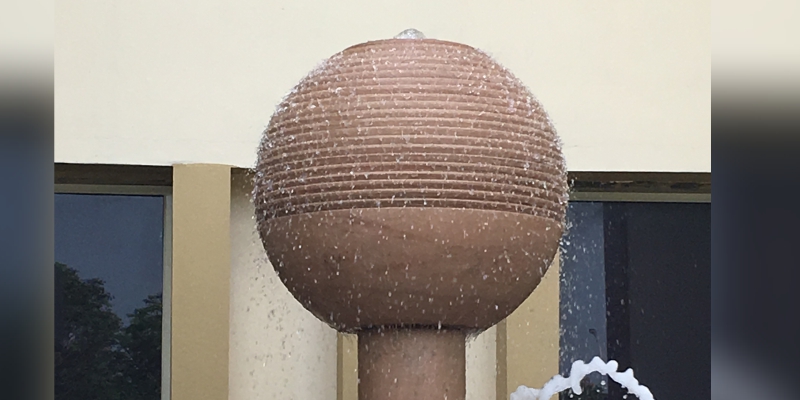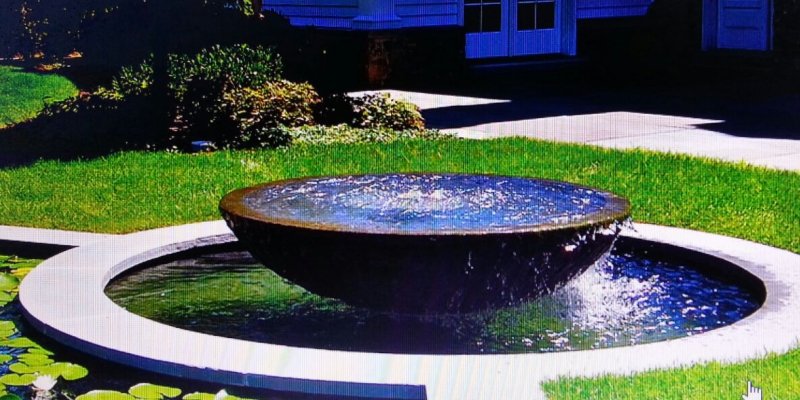Stone Fountains are timeless architectural elements that enhance the aesthetic appeal of gardens, courtyards, hotels, and public spaces. In India, where outdoor spaces often serve as extensions of living areas, these Water Fountains add elegance, tranquility, and a touch of luxury. However, to ensure they remain stunning for years, proper maintenance is crucial.
At Vishwakarma Shilp Karyalay, we specialize in crafting premium Stone Fountains, including unique Rotating Fountains and custom Water Features that become the highlight of any landscape. For architects, builders, and property developers in India, understanding how to care for stone fountains is essential. Weather conditions, water quality, and material durability play a significant role in their longevity. This guide covers everything you need to know about maintaining stone fountains—from cleaning techniques to seasonal care—so they remain a centerpiece of beauty.
Why Stone Fountain Maintenance Matters
Stone Fountains, whether made of marble, granite, sandstone, or Kota stone, require regular upkeep. Neglect can lead to:
- Mineral buildup (from hard water)
- Algae and mold growth (due to humidity)
- Cracks and erosion (from weather exposure)
- Pump clogging (from debris accumulation)
A well-maintained Water Fountain not only looks better but also functions efficiently, reducing long-term repair costs.

Step-by-Step Guide to Maintaining Your Stone Fountain
1. Choose the Right Stone for Indian Climates
Before installation, selecting the right stone is key. Popular choices in India include:
- Marble (elegant but porous, needs sealing)
- Granite (durable, low-maintenance)
- Sandstone (natural look, but prone to water stains)
- Kota Stone (affordable, weather-resistant)
Pro Tip for Architects: For high-humidity regions like Mumbai or coastal areas, opt for granite or Kota stone. In dry regions like Rajasthan, sandstone works well but requires sealing.
At Vishwakarma Shilp Karyalay, we help you choose the best material for your fountain project depending on location and design.
2. Regular Cleaning to Prevent Buildup
Dust, algae, and mineral deposits can dull your Stone Fountain’s beauty. Follow these steps:
Weekly Cleaning:
- Drain the water and scrub with a soft brush.
- Use mild soap (avoid harsh chemicals that damage stone).
- Rinse thoroughly to prevent soap residue.
Monthly Deep Cleaning:
- For mineral deposits: Use a 1:1 vinegar-water solution.
- For algae: A diluted bleach solution (1 cup bleach per gallon of water).
- Rinse well to avoid pump damage.
Builder’s Note: Avoid acidic cleaners on marble—they can etch the surface.
3. Protect the Stone with Sealants
Indian weather—monsoon rains, extreme heat, and pollution—can wear down stone. Applying a high-quality sealant every 6–12 months helps:
- Prevent water absorption (reduces cracks)
- Resist stains from leaves and dirt
- Maintain natural color (UV protection)
Best Sealants for Indian Conditions:
- Penetrating sealers (for porous stones like sandstone)
- Acrylic sealers (for a glossy finish on marble)
Architect’s Tip: Test sealant on a small area first to ensure compatibility.
4. Maintain the Water Pump & Plumbing
A clogged or malfunctioning pump can ruin your Water Fountain’s functionality.
- Clean the pump monthly by removing debris
- Check water levels (evaporation is common in hot climates)
- Use distilled water (if possible) to reduce mineral deposits
For Builders: Install a removable pump for easier maintenance.
Vishwakarma Shilp Karyalay fountains are designed with user-friendly pump systems to simplify upkeep.

5. Seasonal Maintenance for Indian Weather
India’s diverse climate demands seasonal care:
Summer (April–June)
- Refill water frequently (evaporation is high)
- Shade the fountain to prevent overheating
Monsoon (July–September)
- Cover the fountain during heavy rains to avoid overflow
- Check drainage to prevent waterlogging
Winter (December–February)
- Run the pump occasionally to prevent freezing in North India
- Inspect for cracks caused by temperature fluctuations
6. Preventing Algae & Bacterial Growth
Stagnant water breeds algae and mosquitoes—a common issue in India.
- Add an algaecide (safe for stone and plants)
- Install a small fountain aerator to keep water moving
- Use copper coins (natural algaecide) in the basin
Eco-Friendly Tip: Neem oil or barley straw pellets can reduce algae naturally.
7. Repairing Cracks & Damage
Over time, Stone Fountains may develop cracks.
- Small cracks: Use a stone filler or epoxy
- Large cracks: Consult a professional stonemason
Preventive measure: Avoid using high-pressure jets that can erode stone.
Builder’s Advice: Always keep spare matching stone tiles for repairs.
Vishwakarma Shilp Karyalay offers restoration services and spare parts for seamless repairs.

Enhancing Fountain Aesthetics
Beyond maintenance, consider these design upgrades:
- LED lighting for a dramatic night effect
- Surrounding plants (like ferns or lotus) for a natural look
- Automated water timers for energy efficiency
- Rotating Fountains to create a mesmerizing visual centerpiece
A Well-Maintained Fountain Lasts Generations
Stone Fountains are investments in beauty and tranquility. For architects and builders in India, proper maintenance ensures they remain stunning despite harsh weather conditions. By following these steps—regular cleaning, sealing, pump care, and seasonal adjustments—you can preserve the elegance of Water Fountains for decades.
Whether you’re designing a luxury villa in Bangalore or a heritage resort in Udaipur, a well-kept fountain elevates the space.
At Vishwakarma Shilp Karyalay, we don’t just create Stone Fountains—we help you preserve their legacy. Share this guide with your clients to help them protect their architectural masterpieces.
Got questions? Drop them in the comments—we’d love to help!



Leave a comment